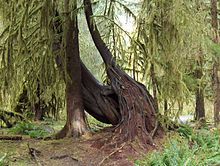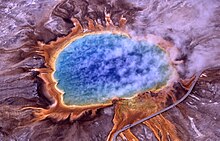The science concerned with the study of life is referred to as Biology.
Living organisms undergo metabolism, maintain homeostasis, possess a capacity to grow, respond to stimuli, reproduce and, through natural selection, adapt to their environment in successive generations.
Living organisms can communicate through various means.
In philosophy and religion,
the conception of life and its nature varies. Both offer interpretations as to how life relates to existence and consciousness, and both touch on many related issues, including life stance, purpose, conception of a god or gods, a soul or an afterlife.
Early theories about life
Materialism
Some of the earliest theories of life were materialist, holding that all that exists is matter, and that all life is merely a complex form or arrangement of matter. Empedocles (430 BC) argued that every thing in the universe is made up of a combination of four eternal "elements" or "roots of all": earth, water, air, and fire. All change is explained by the arrangement and rearrangement of these four elements. The various forms of life are caused by an appropriate mixture of elements. For example, growth in plants is explained by the natural downward movement of earth and the natural upward movement of fire.[6]
Democritus (460 BC), the disciple of Leucippus, thought that the essential characteristic of life is having a soul (psyche). In common with other ancient writers, he used the term to mean the principle of living things that causes them to function as a living thing. He thought the soul was composed of fire atoms, because of the apparent connection between life and heat, and because fire moves.[7] He also suggested that humans originally lived like animals, gradually developing communities to help one another, originating language, and developing crafts and agriculture.[8]
In the scientific revolution of the 17th century, mechanistic ideas were revived by philosophers like Descartes.
Hylomorphism
Hylomorphism is the theory (originating with Aristotle (322 BC)) that all things are a combination of matter and form. Aristotle was one of the first ancient writers to approach the subject of life in a scientific way. Biology was one of his main interests, and there is extensive biological material in his extant writings. According to him, all things in the material universe have both matter and form. The form of a living thing is its soul (Greek psyche, Latin anima). There are three kinds of souls: the "vegetative soul" of plants, which causes them to grow and decay and nourish themselves, but does not cause motion and sensation; the "animal soul" which causes animals to move and feel; and the rational soul which is the source of consciousness and reasoning which (Aristotle believed) is found only in man.[9] Each higher soul has all the attributes of the lower one. Aristotle believed that while matter can exist without form, form cannot exist without matter, and therefore the soul cannot exist without the body.[10]Consistent with this account is a teleological explanation of life. A teleological explanation accounts for phenomena in terms of their purpose or goal-directedness. Thus, the whiteness of the polar bear's coat is explained by its purpose of camouflage. The direction of causality is the other way round from materialistic science, which explains the consequence in terms of a prior cause. Modern biologists now reject this functional view in terms of a material and causal one: biological features are to be explained not by looking forward to future optimal results, but by looking backwards to the past evolutionary history of a species, which led to the natural selection of the features in question.
Vitalism
Vitalism is the belief that the life-principle is essentially immaterial. This originated with Stahl (17th century), and held sway until the middle of the 19th century. It appealed to philosophers such as Henri Bergson, Nietzsche, Wilhelm Dilthey, anatomists like Bichat, and chemists like Liebig.Vitalism underpinned the idea of a fundamental separation of organic and inorganic material, and the belief that organic material can only be derived from living things. This was disproved in 1828 when Friedrich Wöhler prepared urea from inorganic materials. This so-called Wöhler synthesis is considered the starting point of modern organic chemistry. It is of great historical significance because for the first time an organic compound was produced from inorganic reactants.
Later, Helmholtz, anticipated by Mayer, demonstrated that no energy is lost in muscle movement, suggesting that there were no vital forces necessary to move a muscle. These empirical results led to the abandonment of scientific interest in vitalistic theories, although the belief lingered on in non-scientific theories such as homeopathy, which interprets diseases and sickness as caused by disturbances in a hypothetical vital force or life force.



No comments:
Post a Comment